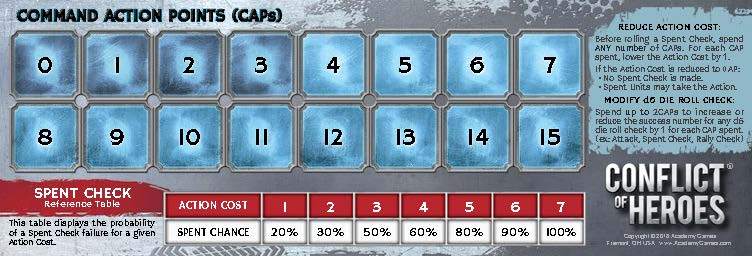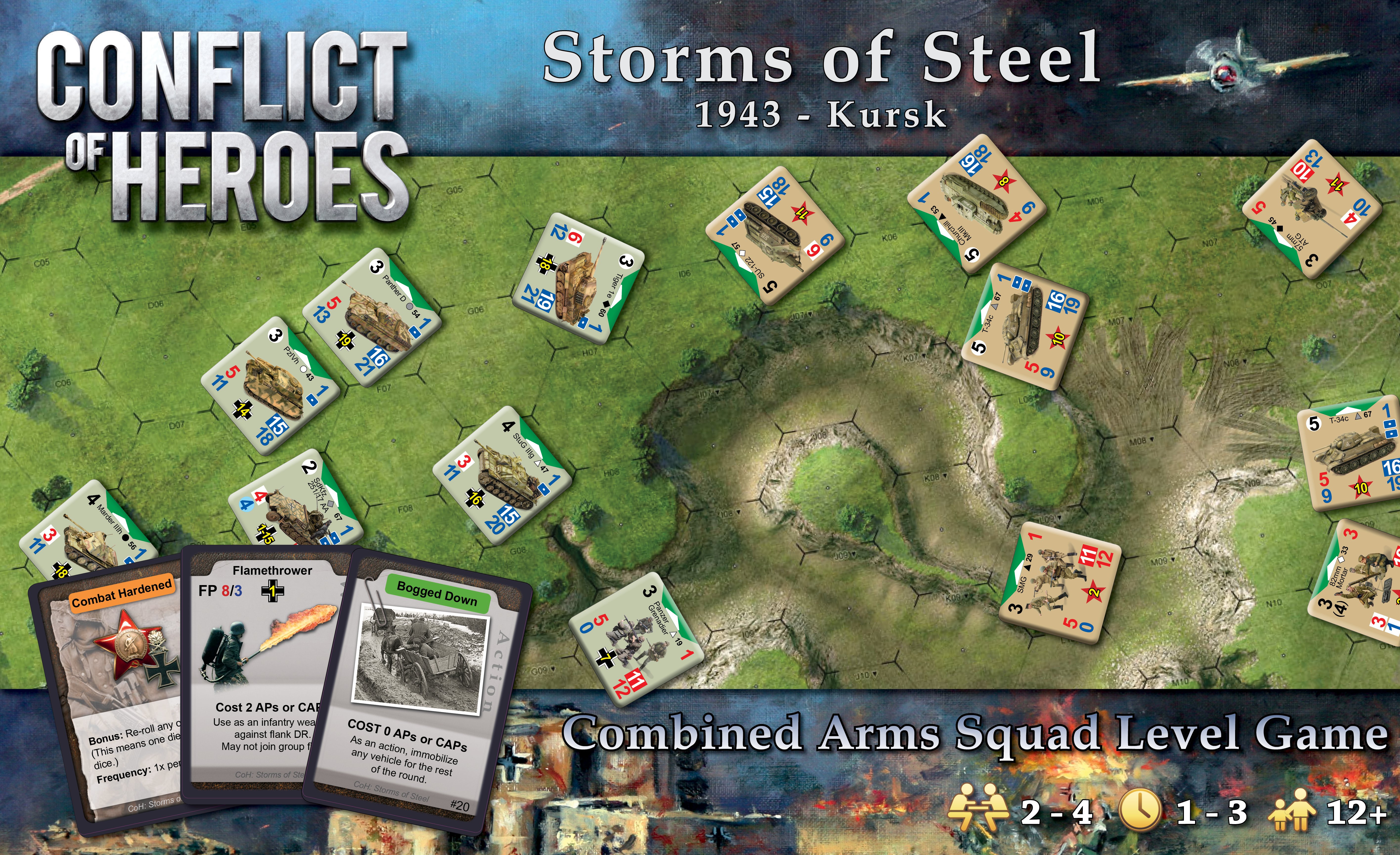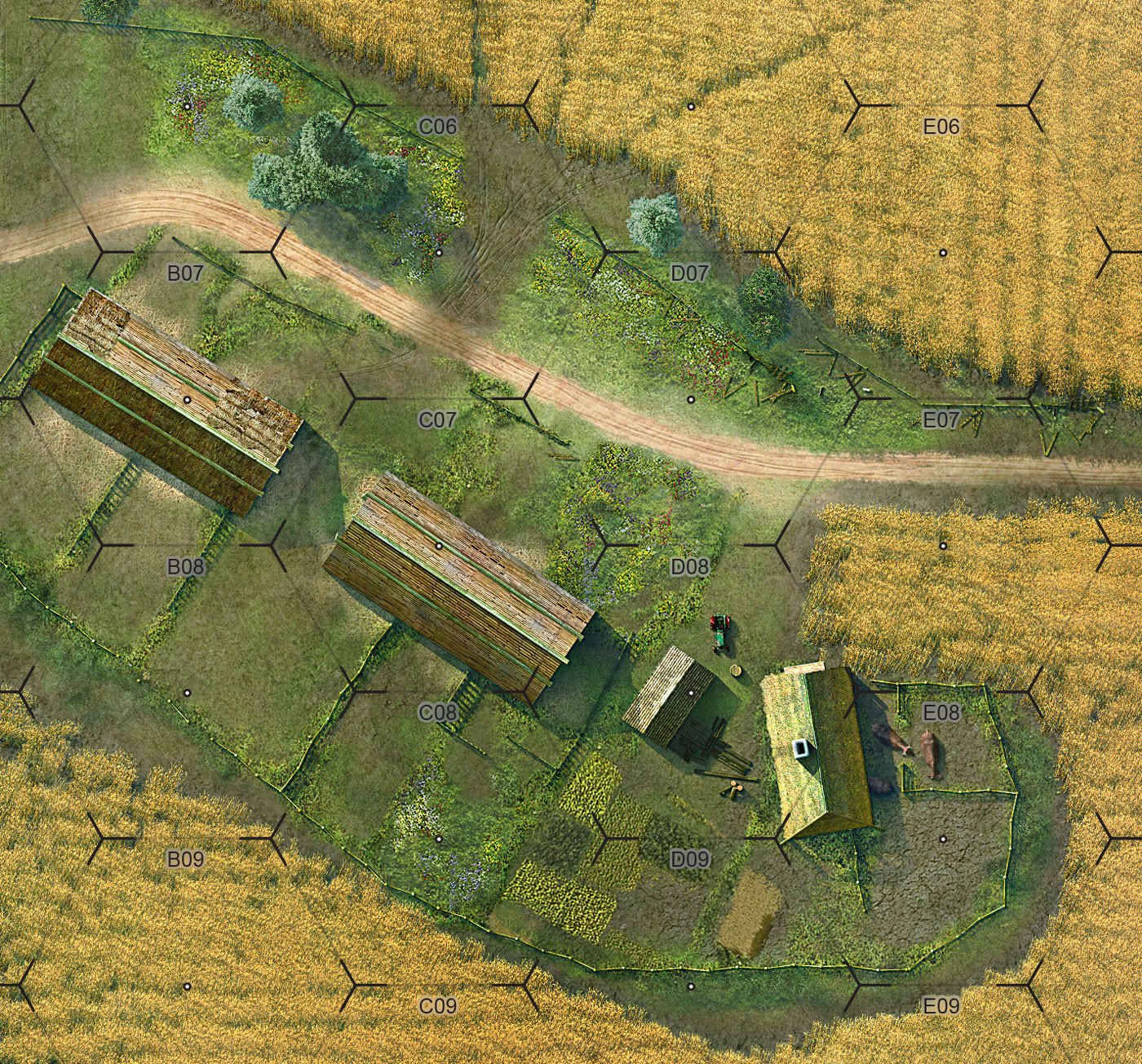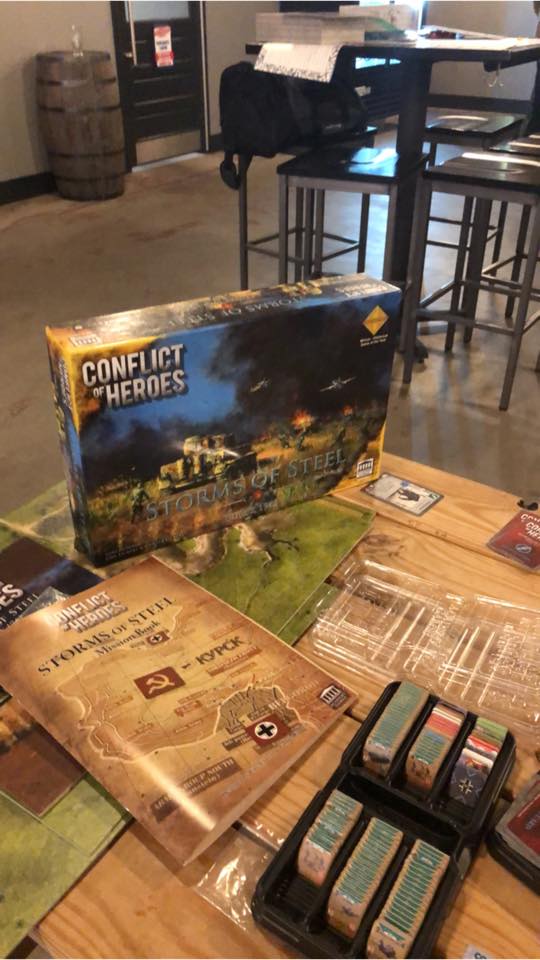Conflict of Heroes: 3rd Edition Review
By Mitch Reed
How does one review a game that is the latest in an award-winning series? Maybe talk about the one thing you didn’t love about the game?
One of the most prized possessions in my gaming bookcase has always been Guadalcanal from s. I loved this game, the big counters, the amazing artwork, and the solid rules made this one of my all-time favorites.
Despite my love for the game, it had one aspect I didn’t care for: the activation system. However, the third version of the game brings you a new activation system which changes Conflict of Heroes into an entirely new game that will exceed its already lofty laurels.
If you are not familiar with the CoH line and love tactical combat you should consider adding these games to your collection. The series allows you to recreate the fighting between the Soviets and Germans during Operation Barbarossa in Awakening the Bear, Kursk in the Storms of Steel title and of course Guadalcanal speaks for itself.
Infantry units are six to 12-man squads. Tanks, trucks, mortars, AT guns, etc. are either a single vehicle or one gun with 4-6 men.
Each player controls a platoon to company-sized force that can be backed up with tanks, guns and sometimes even aircraft. The rules are intuitive and slim but do not let that scare you off, the lack of massive rulebook is made up for by tight mechanics with a lot happening under the hood. I play a lot of tactical games and this one holds its own against any other tactical World War II wargames. Even miniatures players will love this game because it plays like a good set of miniatures rules.

So, what has really changed? As I stated above the previous activation mechanic limited the game. In the old edition, you have seven activation points to give orders to a unit. Once its points were used up it becomes “Spent” and you can then move onto another unit. This caused you to focus on one unit at a time for most of the game.

However, in the 3rd Edition of AtB and SoS, this mechanic is changed by now rolling a special d10 which determines if your unit becomes “spent.” This is a huge change for the game.
I recently had a chance to speak to Uwe Eickert from Academy Games. Uwe told me that that the change came from him listening to players from the US Marine Corps and hearing their comments about the game. While the game re-creates tactical combat very well, the old mechanics limited the ability of the player to see the entire battlefield and use their forces in a way they can mutually support one another.

When you use a unit, you take a “Spent Check” with a d10 (numbered 1,1,2,3,3,4,5,5,6,7), if you roll above the cost of the action the unit just is not spent and you place a “Stress Token” on the unit counter. If you use the unit again in the next impulse the token adds a +1 to the spent check. If you use another unit during your next impulse, that unit now has the “Stress Token” on it and the previously used unit can take an action in the next impulse without the penalty.

While this may seem like a minor change to some, I feel it is a huge change in how the game is played. Each time you use a unit you take the chance to “spend” the unit – finishing its turn. This mechanic now really illustrates how the Fog of War works on the battlefield for a commander and shows that even giving an easy to accomplish order in a firefight may be resisted by a unit that is in the heat of battle.
Some older players may have liked the old system to spend the seven Action Points for each unit. This new mechanic, however, opens up the game and provides a new experience. Even giving a unit a simple move order that costs One Action Point may cause the unit to be spent. This happened to me a lot when I recently played it at the .

The game also plays quicker in the new edition. You now can use a unit during an impulse, with the knowledge that you can pick another unit in the next impulse. This helps you not worry about each decision you make for a single unit. You now can focus on the entire battle and develop a better tactical solution for the situation you find yourself in.
The new mechanic also allows you to see how “opportunity fire” is baked into the game system in a very slick and easy to play way. I know as you play the 3rd Edition you will realize how the game is different and much better than the previous edition.

Uwe doing what he does best, building excitement for CoH!
For those who haven’t gotten on the CoH bandwagon, I wonder what you are waiting for. The game is pure eye candy, with the maps, counters, and cards so well done it will make you just want to open the box to admire it. The rules are also well written and to play the first few Firefights you only need to read a few pages of rules.
The rules are intuitive and easy to understand and I have never seen players confused after they have learned the basics. The card mechanic in CoH really adds a lot of detail to the game and can bail you out of a tough situation as well as put that final nail in the coffin of your opponent. You can download all the rules to check them out yourself.

I also picked up some other goodies from Uwe besides Awakening the Bear and Storms of Steel. I picked up the Solo Expansion, Scenario Generator, Monster Tanks Expansion (which has the Maus super tank), and the Wrecks and Destruction Expansion.
I also picked up the Marsh Map Expansion and the Polish expansion called Price of Honour from Board Game Geek. Now I have the entire collection, and you can say that I am committed to the series.

The 3rd Edition of CoH really amps up the fun for an award-winning game and moves it to a new level. I expect that the game will continue to collect awards and attract even more gamers into the fun series.

I’ve been interested in this series for a while. Revisions sound promising. Gameplay sounds somewhat similar to GMTs Fighting Formations. Any experience with that one to draw a comparison?
I have not, but I will check it out….